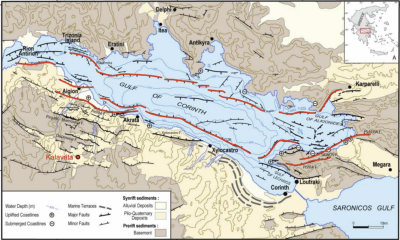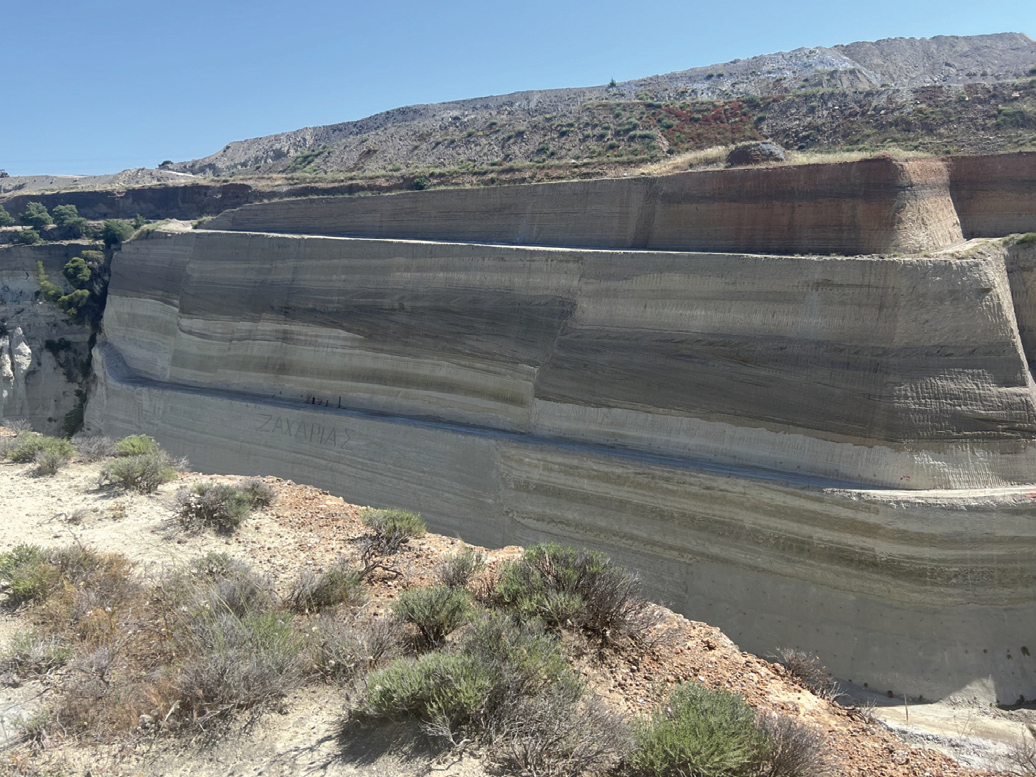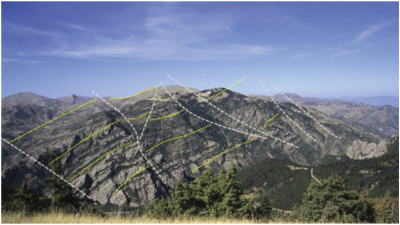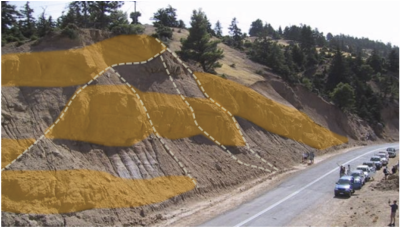Field Trip: Gulf of Corinth 2026

Outline of the Corinth Basin (Moretti et al. 2003)
Welcome to 2026 Field Trip to the Gulf of Corinth. The field trip will take place 4 -8 May. Rift tectonics vs. sedimentation, Fault block scales and geometries, Sedimentological variations and architectur, Seismic and subseismic deformation, Fault properties and fluid flow, Analgues to NCS Seismic Scale Examples. Don't miss out on this great event.
This trip is facilitated by FORCE with instructors from AkerBP and Concedo.
![]()

Date: 4 - 8 May 2026
Register by: 15. March 2026
Location: Gulf of Corinth, Greece
Click here to sign up
Who is this trip for: On this field trip, we will visit approximately twenty localities that highlight a broad spectrum of structuraland sedimentological geological features. The multidisciplinary scope of the trip makes it highly relevant for both geologists andgeophysicists engaged in exploration along the rift margins on the Norwegian Continental Shelf. Special emphasis will be placedon structural geology, fault architecture at the seismic scale, sedimentology and geological evolution—occurring within a timeframe comparable to the major tectonic events that shaped the structural framework of the NCS.
The Gulf of Corinth rift margin offers world class exposures in the scene of an active rift. This field trip demonstrates thecomplexity of rifted margins with respect to timing of fault movements, unconformities and resulting geometries of tectonic and depositional elements. Emphasis will be put on analogies on the Norwegian Continental Shelf.

Modified from Moretti et al. (2003)
Map: The map shows the geological outline of the Gulf of Corinth, situated on the northern Peloponnese coast. The east-westtrending active rift system has been active since Miocene, and syn-rift deposits rest unconformably on top of basement rocks of Cretaceous and older age. Red lineaments show active faults.

Image above: Is taken across the Corinth channel - is showing the northernmost channel wall. At the center of the image, a high-angle normal fault offsets shallow marine sediments showing large-scale examples of cross-bedding and unconformities, providing insights into the marine environment that once existed in the paleo-strait of Corinth, prior to the region’s uplift to its present elevation. One interpretation of the localized uplift of the Corinth channel area is that it may indicate the onset of volcanic activity in the region....


Image 1: Rotated fault block. Mapping of large to medium scale faults and internal sedimentological layering trigger field discussions like fault block geometries, uncertainties in seismic interpretation and compartmentalisation.
Image 2: Small-scale faults segmenting fluvial channels. Relevant topics like sediment transport direction, fault seal analyses and implementation of heterogeneities in 3D models are discussed.
1. 
2.
Image 1: The image on the left shows the 2025 Kalavrita team approaching the Pissia Fault - a presently active fault within the extensional tectonic regime of the Corinth region. On February 24, 1981, at 10:53 p.m. local time, a major earthquake struck the area, resulting in 20–22 fatalities. A powerful aftershock followed at 4:35 a.m, registering a magnitude of 6.3. During these seismic events, displacement along the Pissia Fault exceeded 1.5
meters. This movement remains visible today as a horizontal color contrast along the fault plane, caused by reduced vegetation in its lower sections. Additional geological features observable at this location include
slickensides, fault plane deformation, and more.
Image 2: At the locality to the left one can observe a coarse graines conglomeratic river channel embedded in sandstones and siltstones of Late Pliocene age. The channel can be picked up on the other side of the road enabling the construction of a 3D model of its geometry. Excellent exposures of synsedimentary faults enable discussions on deformation processes leading to clay enrichment and sand mobilization within and along fault zones.
Excursion Guide: Einar Sverdrup, Advanced Geologist (Aker BP ASA).
Field Assistant, Anders G. Finstad, Explorationist (Concedo AS).
Duration: The Gulf of Corinth field trip is scheduled to start and end in Athens (Monday 4th to Friday 8th May 2026), with 3 full days (Tuesday-Thursday) in the field.
Cost: Estimated to NOK 12.000 , which includes hotels, rental cars and common meals. Plane tickets are not included. Recommendation for booking of plane-tickets will be given as soon as the trip is confirmed.
Other: Number of participants 8-15. Some adjustments of the price can occur based on the final number of participants (+/- 10%).
The field trip schedule, as well as excursion field guide will be provided in due time before the trip.
Disclaimer
Please be aware that Force is not responsible for any injuries, damages, or losses that may occur during field trips organized by or in the name of Force. Every company or participant is responsible for their own safety and well-being, and must cover their own injuries, damages, and other liabilities that may arise during the field trip.
By participating in a field trip, you acknowledge and agree that Force and its representatives shall not be liable for any damages, injuries, losses, or claims of any kind, whether caused by negligence or other factors. You further agree to indemnify and hold Force and its representatives harmless from any and all claims, damages, or losses arising from your participation in the field trip.
Please note that field trips may involve risks and hazards that are beyond our control, such as weather conditions, terrain, wildlife, and other factors. It is your responsibility to assess and manage these risks before and during the field trip, and to take appropriate precautions to ensure your own safety and well-being.
FORCE seminars have previously been fully booked with waiting lists so you are encouraged to sign up as soon as you know you will attend.
Important information:
Payment is made online by credit card or VIPPS. Please note that no refunds will be given after you have signed up.
If you for any reason cannot attend the workshop, you are welcome to send a representative, just inform the FORCE Secretariat as soon as there are changes.
If you need to cancel your registration, please use the confirmation e-mail you received when you signed up.
If the seminar/webinar is cancelled, your payment will be refunded.
For other questions, please contact the FORCE Secretariat
Norwegian Petroleum Directorate org.no: 870917732
Oppdatert: 07.11.2025
